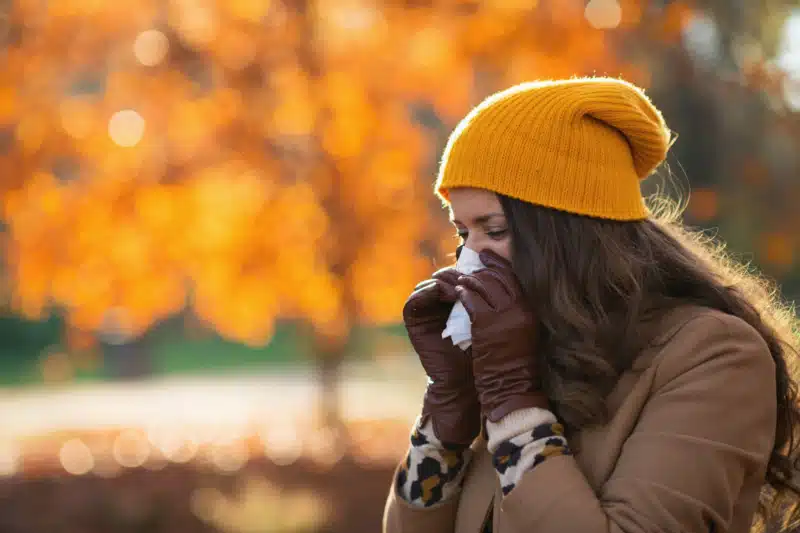 go back
go back
What to Know About Fall Allergies and The Approaching Cold, Flu Season in Southern Colorado
October 16, 2023
Education 
This article was originally published by The Gazette.
With the change of season, fall allergies and cold and flu season have landed in Colorado Springs.
According to Dr. Robert McDermott with AllerVie Health, the most prevalent allergens present in Colorado during this time of year come from a variety of weeds found naturally in September.
“In the fall, the most common allergies in Colorado are weeds,” McDermott said. “Specifically, we have a high population of sage tumbleweed and ragweed.”
“Sage pollen, in particular, will pollinate until the first hard freeze.”
McDermott said weather is the main contributing factor to the severity of allergy seasons.
According to McDermott, due to this past spring’s influx of rain and moisture, the area is experiencing lingering effects of summer allergies. The moisture also contributes to the severity of fall pollen allergies.
“A drought year where trees, grass and weeds are under stress due to lack of water can provide for less severe pollen seasons, and conversely, a year with adequate or excessive moisture can lead to more severe pollen seasons,” McDermott said, “Dry, windy days can be problematic, as this will disperse and spread pollen.”
However, McDermott adds that an early freeze could help allergy sufferers by bringing the pollen season to an end prematurely.
To mitigate symptoms, McDermott recommends keeping your bedroom window closed at night and using an air purifier.
“There are also many over-the-counter options available without a prescription for nasal steroids and antihistamines, which are very effective,” McDermott adds.
According to Dr. Bernadette Albanese, the co-medical director of El Paso County Public Health, three respiratory viruses are expected to reign during cold and flu season: influenza, COVID-19 and respiratory syncytial virus, or RSV.
“The burden and severity of respiratory illness in our community will depend on the trends for each virus,” Albanese said, “In other words, we are looking at when the virus activity begins, peaks, and slows, in addition to which persons are most impacted.”
Albanese added the most at-risk groups to be affected by any of the respiratory viruses listed include young children, people over age 65, and people with chronic health conditions.
“However, anyone can get infected with these viruses and even healthy people can experience complications and can spread infection to other people,” Albanese said.
According to Haley Zachary, the communicable disease program manager for El Paso County Public Health, numerous prevention measures are available and effective in helping reduce and prevent the spread of illness, including: